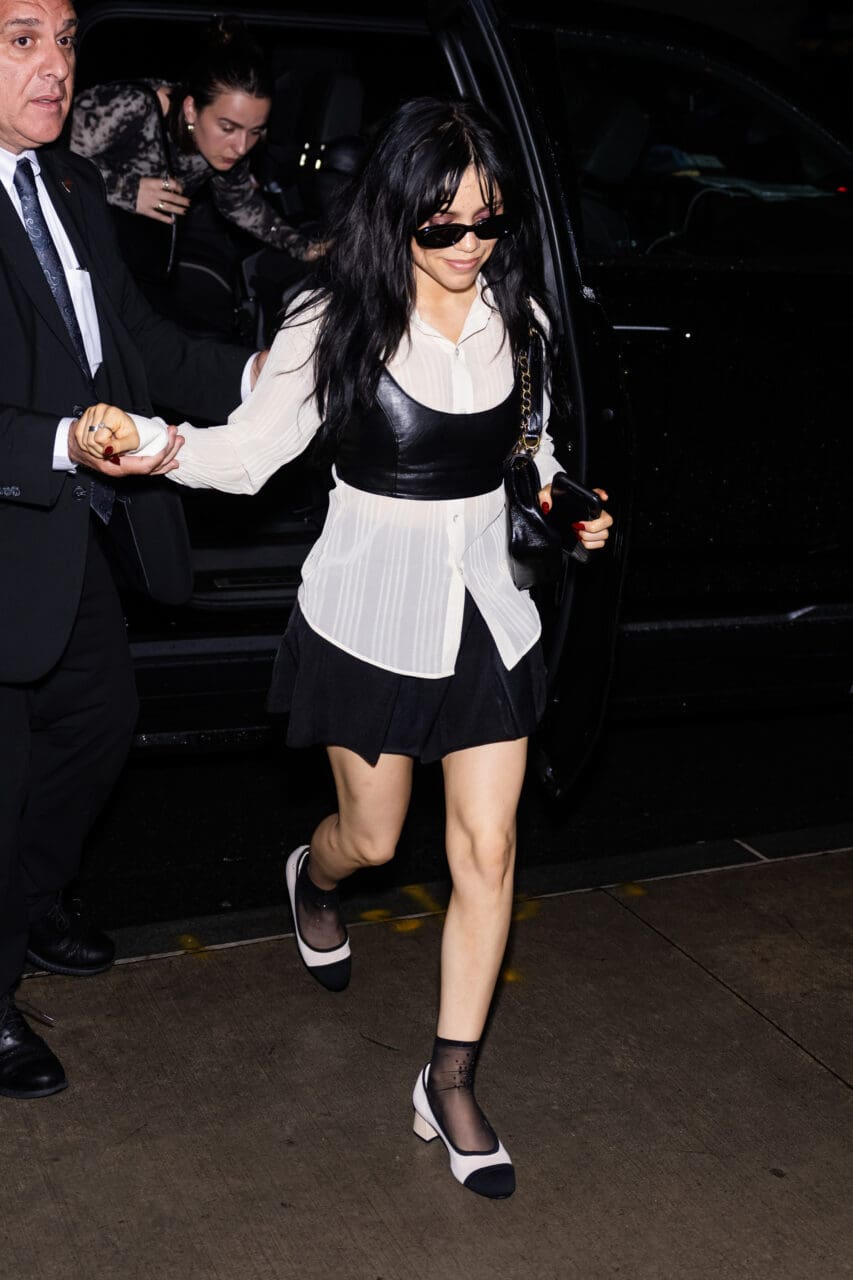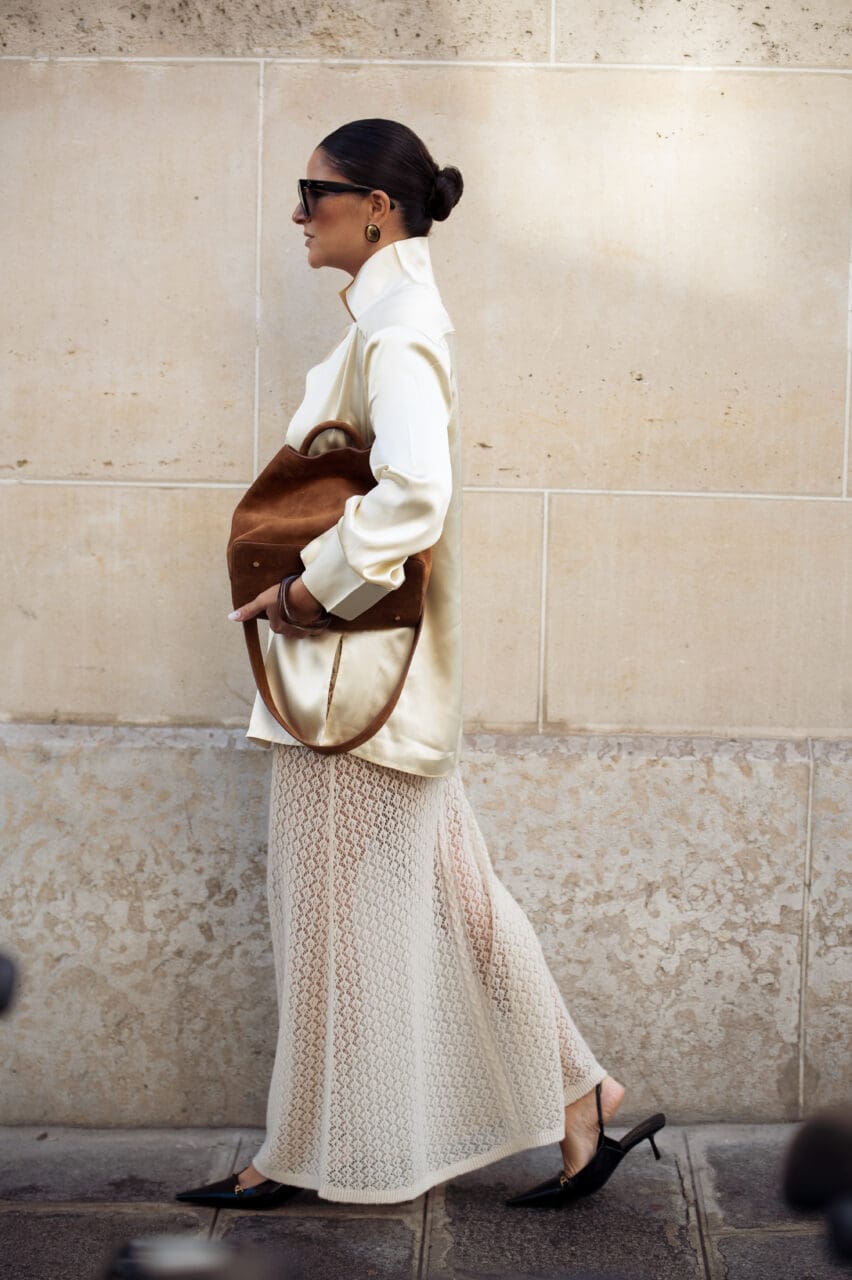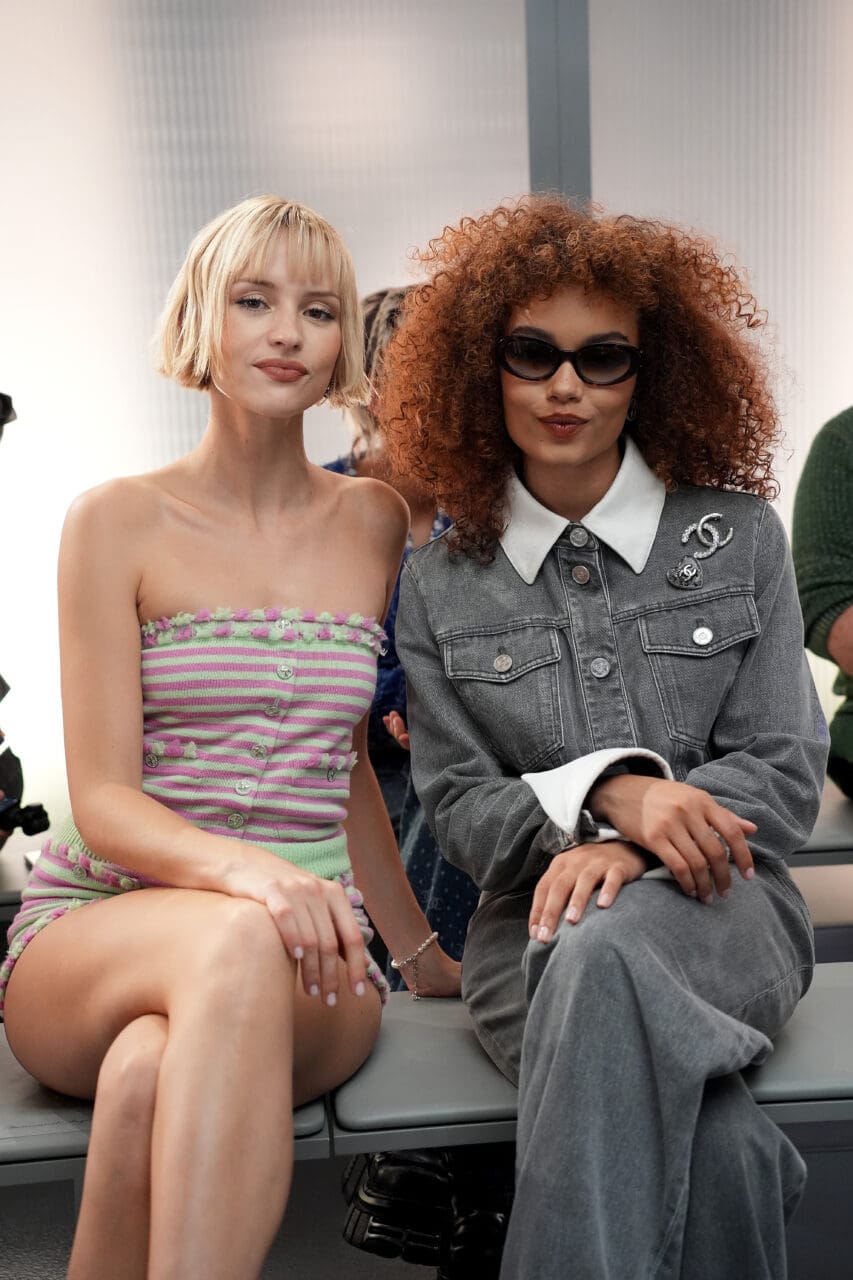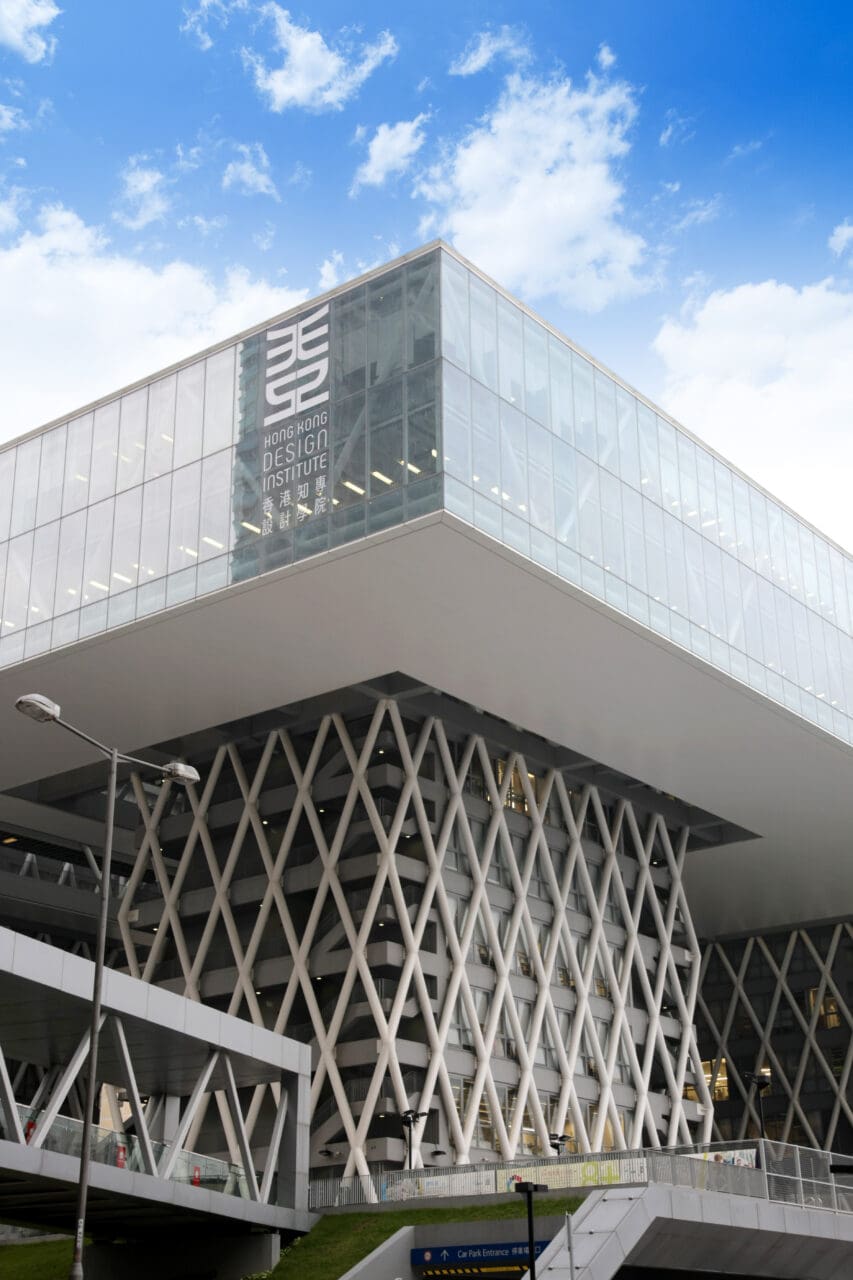It was February 2007. Balenciaga’s Lego shoes had just walked the Paris runway and designer Nicolas Ghesquière was telling Style.com’s Sarah Mower, “It’s a big mix—a street mix, with symbols and colors that are very multicultural. […] It’s about how girls become themselves.” Outside the show, two North American guys with point-and-shoot cameras in hand were waiting to capture the “big mix” that had inspired Ghesquière’s collection: street style.
Before they picked up their cameras and registered their domain names, Tommy Ton and Phil Oh were a fashion-obsessed and a party-obsessed pair, one from Toronto, the other from Chicago, who landed in Paris with suitcases full of their best, brightest outfits. “We didn’t know anyone,” laughed Ton as we met to reminisce before the Christopher John Rogers show in Brooklyn earlier this month.
It’s been 15 years since that moment and almost nothing of the circa 2007 fashion industry remains. (Ghesquière left Balenciaga in 2013, Style.com became Vogue Runway in 2015, and the Lego shoe was replaced by a more walkable Balenciaga hit in similar primary colors in 2017: The Triple S.) But Tommy and Phil, as everyone with a front row seat or backstage pass knows them, are still outside venues from New York to Paris, as rapt as ever with the wardrobes of the fashion world. Why? Sheer perseverance? Obsession? Wild, unmeasurable financial success?

Elena Perminova, Michelle Violy Harper, Natalie Joos, Mira Duma, Anya Ziourova, Anna Della Russo, and Giovanna Battaglia Englebert in New York in 2013
Photographed: Tommy Ton
“What else would we do?” Oh deadpans. Having had a sideline view of Tommy and Phil for a decade myself, I’d venture they’re still here because of their passion and their perceptiveness. Just as Ghesquière was envisioning “how girls become themselves,” Tommy and Phil have chronicled how the fashion industry became itself by putting their kind focus on its players. Where magazines of the late 2000s and early 2010s were capturing only the most successful or famous, Tommy and Phil happily turned their lenses to anyone with a cool outfit and a great smile. The democracy that fashion says it’s after has always existed in their pictures, which places them in a canon of street photographers from Amy Arbus to Shoichi Aoki to Bill Cunningham.
What’s more, when you are with Tommy and Phil, you are never alone. In a blood-sucking industry, where everyone is the competition, you are always welcomed into Tommy and Phil’s world. You get to play with their deep history of fashion, you get to trade stories and laughs, and—more often than not—you get the best snacks from their always-full backpacks.
Selfishly, I hope they will be there outside the shows forever—or at least for as long as I am—training their lenses on the people who are making the difference in fashion. Here, they reflect on 15 years of friendship and the ever lingering question of where street style is going next.
Yu Masui photographed in Paris in 2021
Photo: Phil Oh
Tell us the story of how you first met. It was 2007….
Tommy Ton: It was in our first season in Paris, February, 2007. I think it was maybe the third- or second-to-last day of the week. The shows used to be held in the Carrousel du Louvre, downstairs. I was wearing a Jeremy Scott food-print hoodie, a leather Marc Jacobs train conductor hat, my silver Adidas reflective sneakers, and maybe some Helmut Lang zippered tuxedo pants.
This is quite a look, Tommy!
Ton: That’s why he came up to me! He comes up asking, “Hey, can I take your photo for Street Peeper?” I’m like, “Who me?! Someone actually wants to take my photo after the whole week of peacocking!” We didn’t know who each other were. Our blogs weren’t even really a thing yet.
Phil Oh: This is how I met Susie Lau too. I just saw this bright blue thing and went up and took her picture.
And you’ve been friends ever since?
Ton: We didn’t kick off the friendship right away. And it wasn’t until the following season, September in New York.
Oh: I reminded you I took your photo in Paris.
Ton: Yes, and we became friends then. But the reason why I didn’t see Phil that often was because—
Oh: I didn’t really work that hard! [Laughs.]
Ton: Phil is not afraid to admit he was there for the parties.
Oh: I started the blog to justify going to fashion parties. I just wanted to hang out. I would do like one show a day—if that.
Ton: If he could wake up! [Laughs.] Phil, do you remember going to La Baron until like six in the morning drinking those strawberry Champagne drinks?
Oh: Mmhmm.
Ton: We started bonding back then because there was almost no one outside the shows. Phil and I were standing there together.
Oh: Tommy basically taught me who everyone was and everything about designer labels.
Ton: We were teaming up. Phil is more outgoing so I would make him stop people.
So it was a mutually beneficial relationship?
Ton: Definitely.
Oh: And then Susie [Lau] joined our friend group. Everything felt, well, it was so easy at that time. Everything was just starting and there was so much opportunity. No deadlines, no clients, just working for ourselves.
Ton: There was no stress of trying to get to one show or another. There were like 15 photographers, maximum.
Oh: 10, barely 10.
Binx Walton and Lexi Boling in New York in 2014
Photo: Tommy Ton
Were you posting on your respective blogs every day?
In unison: No!
Oh: Back then you had to save all your photos and parcel them out over time until the next season. It was not instant at all.
Ton: I was there primarily for these Canadian newspapers that I was shooting for. Those were my money gigs, so I sent them pictures regularly, but I wasn’t posting anything myself.
When did it start feeling like a job?
Ton: For me, it was the end of 2008 when I officially launched Jak & Jil. A year later when I was hired to work with Style.com, I realized this was actually something I could do for a career and actually leave my job in Canada. It’s so much fun though, I never really felt like it was a job even after it was my only job.
Does it feel like a job now?
[Both laugh.]
Oh: It does now. For months at a time.
When Tommy was shooting for Style.com and Phil was shooting for Vogue.com, between about 2010 to 2015, did you feel a healthy rivalry?
Ton: I think one of the reasons why we stay friends is that even though there is some level of friendly competition—
Oh: —he’s doing his thing and I’m doing my thing. We have different styles. We don’t really feel envious.
A Tommy picture and a Phil picture are different. Has maintaining your own aesthetics become more difficult now that the photographers outside shows has gone from maybe 15 to maybe 150?
Oh: Not for me because I like the cast of characters.
Ton: He loves it.
Oh: I don’t really know why. It makes it look more fun. So I don’t really mind when there are other people in the shot. That said, they’re not always pretty, beautiful pictures, so it’s a trade off, I guess.
Ton: I was already complaining about too many photographers in 2012. It gradually got worse and worse.
Oh: All of a sudden there was like a tipping—
Ton: —point. At one point I started crying. It was the end of the season in 2012. I was just like, this is too much for me. I went to someone’s hotel and collapsed like, “I just can’t take this anymore.” It can be hard to stay motivated to do this because you’re getting older and it’s… I don’t know.
Oh: Granted the other nine months of the year we have plenty of free time! [Laughs.] But those three months of Fashion Week are really fucking hard. We are shooting all day, no time for meals, and then have to edit photos all night. You get like three, four hours of sleep. Four weeks straight at a time.
Ton: That’s the thing about the schedule for the whole month: It seems like it’s so much fun, but gradually, you know, just repeating it over and over again, moving over to Europe, switching to different time zones without even a day off. It’s a lot to take on mentally and physically—even when we were in our 20s and early 30s.
At the Paris menswear shows in 2015
Photo: Tommy Ton
Fernando Casablancas in New York in 2021
Photo: Phil Oh
Phil is often texting about photos at 2 a.m., 3 a.m. during Fashion Week. Do you have to be as crazy as we are to keep doing it?
Ton: Yeah. We also depend on it because we have a stable income doing it.
Oh: Plus, we don’t have significant others or families. We can just hop on a plane whenever. I mean we have devoted our personal time to this; we used to constantly fly to Australian Fashion Week, random trips to Japan.
Ton: I mean, it was nice sometimes not having a sense of, well, you know, a family or a partner. We had the luxury of just having fun with it, being able to travel all the time. I’d say the first seven, eight years were really fun. And then the last seven years have been harder because it’s much more stressful now that we’re older—and as much as Phil doesn’t mind the crowds, having that many people in the space and seeing that many faces does drain you. It’s hours of non-stop social interaction. The deadlines are much harsher, too. Phil can’t wait till the next day to edit and send his images.
Well, sometimes he does! [Laughs.]
Oh: Sorry!
Have you ever thought about having a team?
Oh: If you want something done, right. Do it yourself.
Ton: He’s very particular and so am I.
What keeps you coming back for more?
Oh: What else would I do? I’m un-hireable in any other capacity.
But do you still get the thrill?
Ton: As much as we bitch and complain about it? I know secretly we still are very grateful that we have grown into this career. Of course we are going to keep doing it—I don’t want to say until we’re over it, but—
Oh: Until no one wants to hire us!
Why do you think, from a business perspective, you’ve both been able to be successful at this for so long?
Oh: We’re so damn likable! [Laughs.]
But many photographers start out with street style and try to pivot to other types of photography: backstage, ad jobs, studio work, et cetera. Have you ever thought of street style as a gateway to another gig?
Ton: Phil, you can answer.
Oh: I mean, people would ask us, “So you have no aspirations to want to be a real photographer?” We are real photographers.
Ton: You know, whenever people say, “You guys are the pioneers of street style, blah, blah, blah.” I just think street style is a genre of photography that has, over the past two decades, coincided with the invention and huge fascination with social media. That was a huge disruptor in the industry that made fashion feel more accessible. So are we going to bite the hand that feeds us? No. We are so lucky to be able to be hired, to do a job where we just work alone and work quickly. Click, click, click.
I mean, that’s what we are known for and what we enjoy doing. Do we do other stuff? Maybe I do sometimes. I don’t know about Phil, but I am happier than ever to be here now. It’s a different time. We just came out of the pandemic and I feel like what’s happening now, particularly in New York, is very exciting. It’s a very exciting time to capture style on the street. It’s a new generation and a true changing of the guard.
Oh: It’s a disappearing of the guard rather than changing the guard.
Ton: Yeah, that’s true. People are over it. They’re leaving fashion. But it’s fascinating to me to see so many young designers’ shows where all these kids are attending—they are actually a part of the community. In Paris there are so many people outside a show—I mean, any one of them could be the next Virgil.
It does feel like there’s a real flourishing community around fashion, especially in New York.
Ton: I agree.
Oh: But that’s because those old school people don’t have careers. They don’t have jobs anymore.
People don’t have careers and jobs anymore because everything is content and content is evolving faster than we are. Do you think of your work as content?
Oh: Do you mean do we think of our work as disposable?
No.
Oh: I mean, I don’t think of it as art.
I don’t think content is a bad thing. By content I mean: We more aware than ever of the consumer, that we have to meet this output because there is a need to create new things for the purpose of their consumption.
Oh: Well, when I started, I thought of it as documentary. But over the past few years, you don’t get a sense of time or place in them as much anymore because all the looks are planned or provided by the brands. Once that started happening, I thought of it less as documentation of a scene and became more aware, you know, I had to make page views.
I don’t think it will come as a surprise that your slideshows are routinely among our-most viewed articles, most shared and commented-on Instagram posts.
Oh: I bet people email you asking where their picture is. [Laughs.]
It’s more that the second the images go up, our notifications blow up because everyone tags Phil and tags us to say, “I made it to Vogue.” You have to be aware of that in your picture taking process.
Oh: Well, it’s rare to find someone new or someone you have never seen before. To be honest, most of the guests already expect to be photographed, but I’m more excited to find someone new-ish who isn’t so prepared.
Ana Gimeno Brugada at Pitti Uomo in 2015
Photo: Tommy Ton
Your photographs can make a brand successful. They can also turn any young editor or subject into a rising star.
Ton: Isn’t that so funny? Back in the early days, you could pluck a random person in New York and they’d become the next It Girl. Again, that was before influencers.
You must have been aware then, and especially now, that you are king-makers.
Oh: I definitely will take responsibility for having this platform. Of course everybody wants to be on Vogue.com and obviously featuring certain people can give them exposure. It really started happening in the 2010s, brands would notice junior editors and start doing mini campaigns with them and Tommy and I started getting hired for these jobs.
Ton: There was one Danish brand in the early 2010s that was dressing someone who attended fashion week. This was before influencers or P.R. seedings; they were dressing this person we photographed and it turned them into a brand.
Oh: They showed at Milk Studios!
Ton: And then shortly after that it was over. Their moment was over because everyone started dressing the street style girls.
As Fashion Week street style becomes more commodified, are you looking more to shooting street style outside of the show season?
Ton: Phil is not interested in that, obviously, because shooting street style is still his primary job. For me, it’s not really a job anymore. I am collecting images as documentation for a project I’m working on so I will go to book signings or things like that to shoot. It’s more interesting to see people outside the fashion circles where everyone is being dressed by the brand.
Say more about your secret project.
Ton: I’m collecting pictures for a book that I’ve been working on for years. But to go back to the first question: Seven years ago, we would never go anywhere outside of fashion week. I’ve always said you go to fashion week because you fish where the fish are.
Let’s do some rapid fire questions. Tommy’s blog was Jak & Jil. Phil’s is still Mr. Street Peeper. Tommy abandoned the moniker. Phil kept it. Why?
Oh: I didn’t keep it on purpose. I mean, it’s the name that came up when I was in my mid-twenties and now I am 42 and people are calling me Mr. Street Peeper! [Laughs.]
Which picture of each other’s are you most jealous of?
Ton: I’ll answer for both of us. Phil’s answer is the Kanye photo from 2009. It’s a cultural artifact—which for all the photos we take is somehow very rare.
[Ton pulls out his phone and pulls up one of Oh’s photos.]
That’s my choice. That’s such a great picture.
Kanye West, center, Virgil Abloh, right, and friends in Paris in 2009
Photo: Tommy Ton
Oh: That’s Zoe, Patricia Arquette’s daughter.
Ton: Wow.
Oh: And she’s actually wearing all Victorian-era clothes. But at the time, no one really knew who she was.
Ton: What show were you at?
Oh: The Eckhaus Latta show at Hester Park.
What is the future of street style? Answer in 20 words or fewer.
Ton: We’ve been asked this for the last eight to 10 years and all I can say is: It just keeps going and going and going. It’s not dead. It will never be dead. It’s the language of the people.
Do you think you would keep shooting the shows if the other one stopped?
Ton: Well, he’s always said he would be bored if I wasn’t around. Maybe I would be fine? [Laughs.] Most of the time I’m trying to avoid the crowd and do my own thing.
Oh: That’s true.
You would miss each other, I know it. Last question: What is the number one thing beyond your camera and equipment that you absolutely must take with you when you pack for fashion month?
Ton: Phil!
Editor
Steff YotkaCredit
Lead Image: Caroline McCredie/Getty Images for Buro 24/7


























